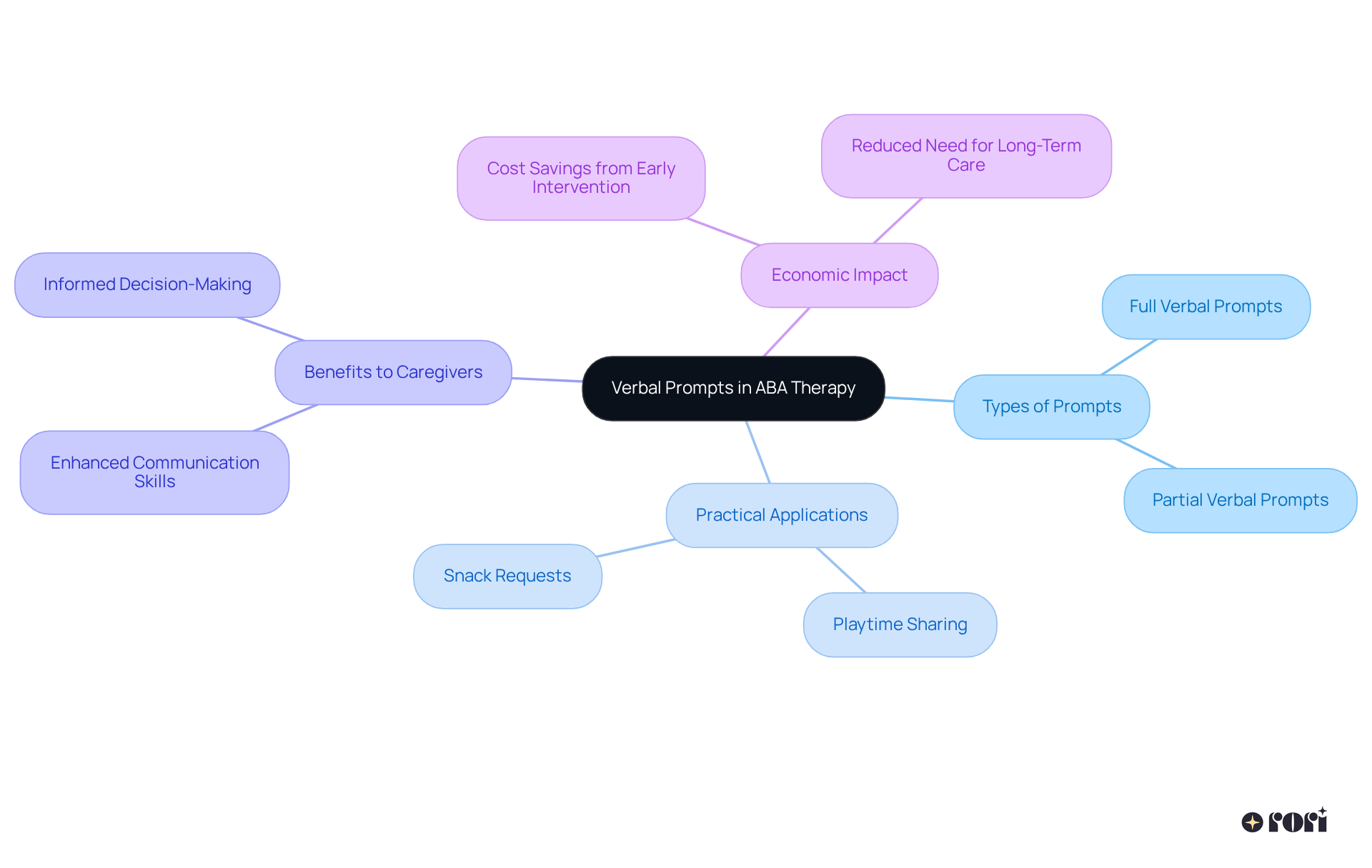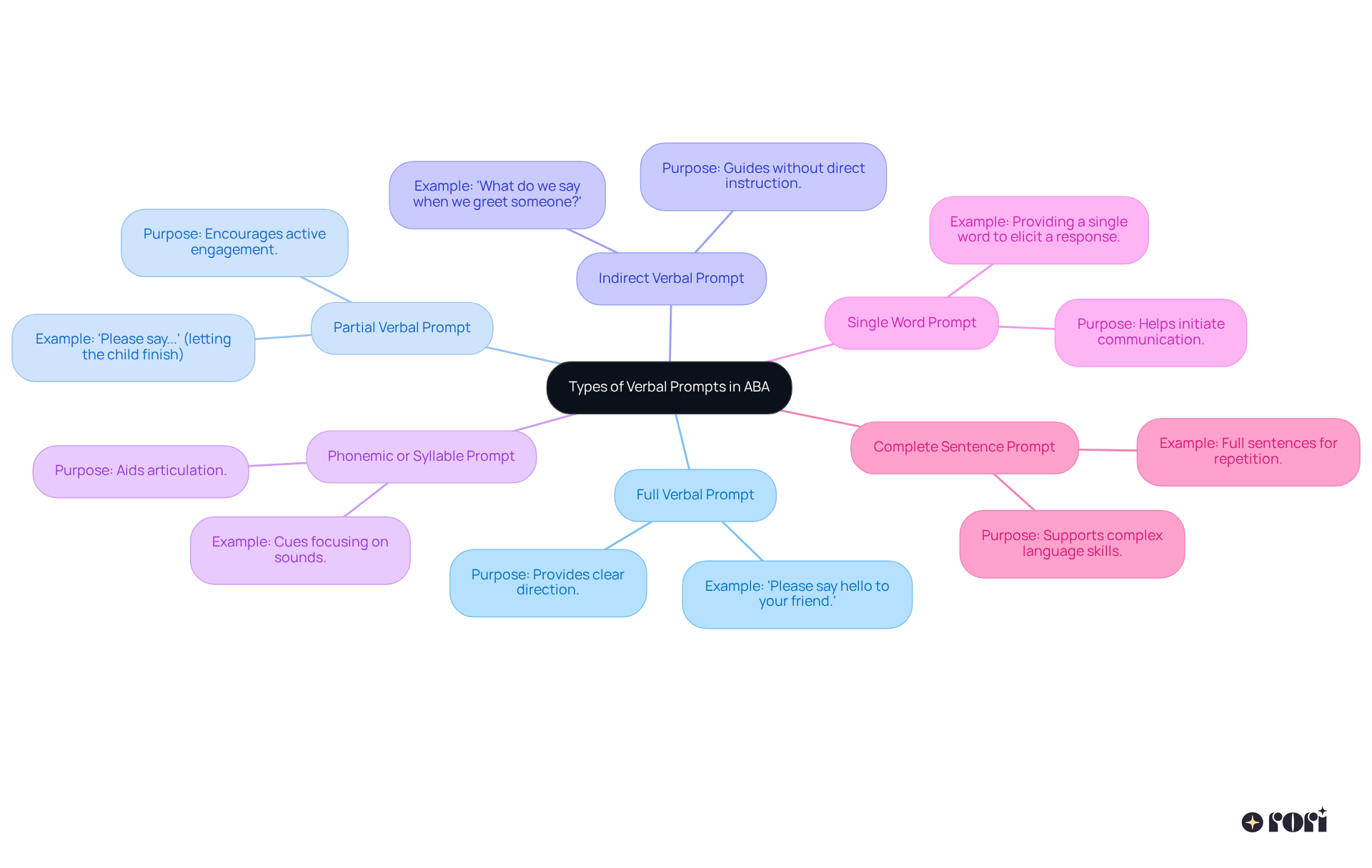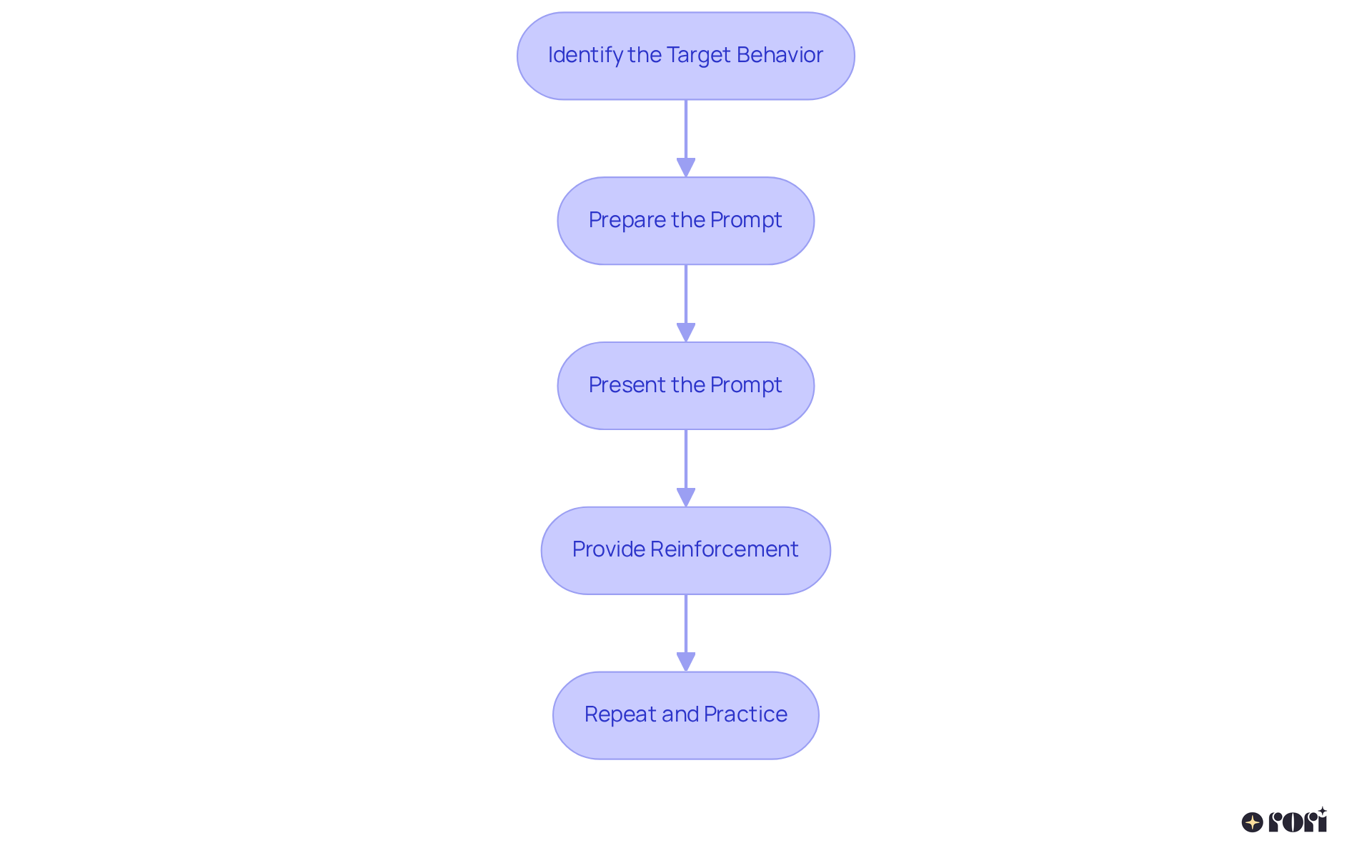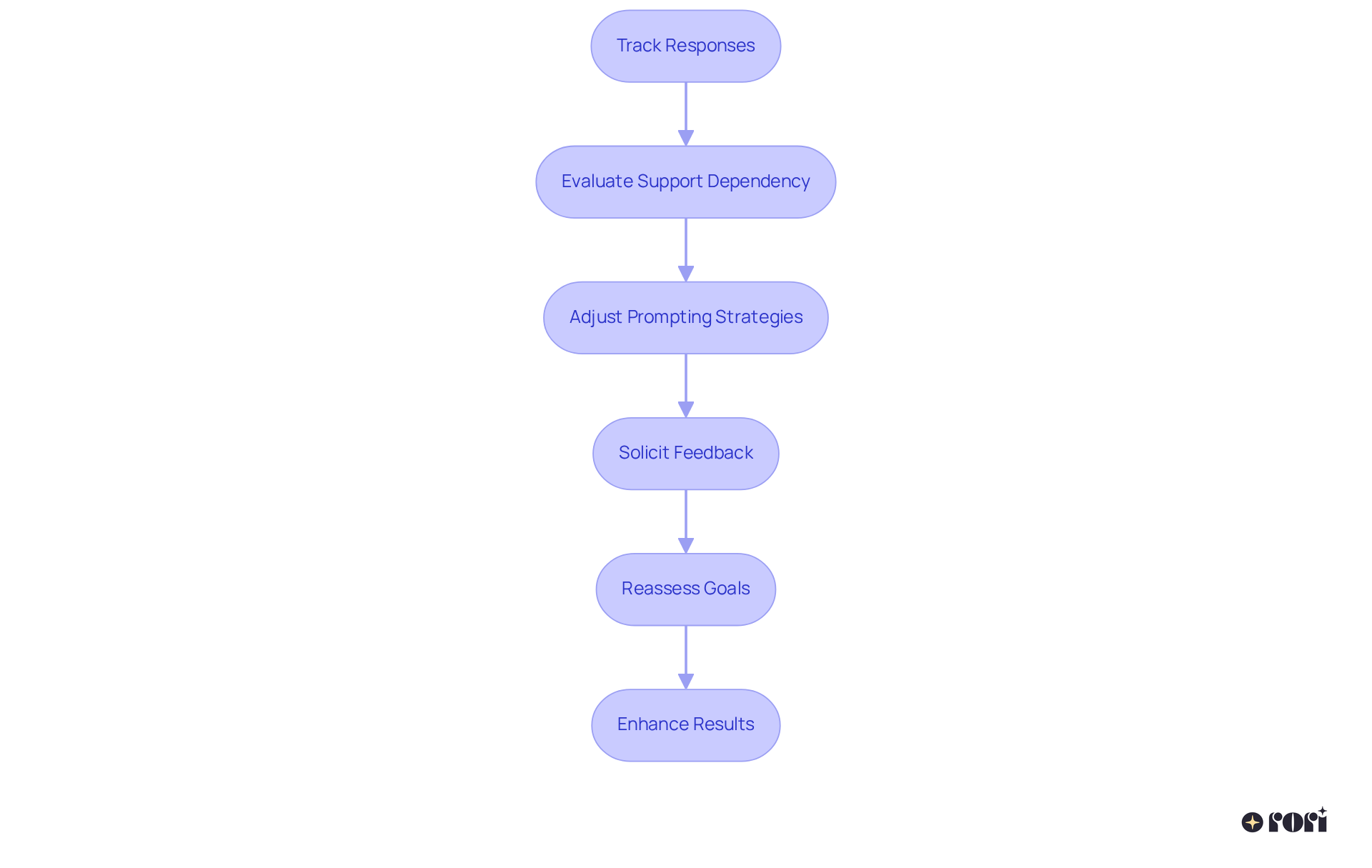This article dives into the use of full verbal prompts in ABA therapy, offering a step-by-step guide to help encourage positive behaviors in children, especially those with autism. It highlights how important it is to provide clear instructions and positive reinforcement, while also making ongoing adjustments based on the child's progress. Research shows that structured verbal prompts can really boost communication skills and independence, making a significant difference in their development. Let’s explore this together!
Verbal prompts are such important tools in Applied Behavior Analysis (ABA) therapy! They help guide children—especially those with autism—toward the behaviors we want to see. When therapists use full verbal prompts, they can really boost communication skills and encourage independence in our little learners. But here’s the thing: implementing these prompts effectively can be a bit tricky.
So, what can caregivers and therapists do to navigate this process? How can we truly empower children on their developmental journey? Let’s explore this together! By sharing strategies and experiences, we can all learn how to make the most of these valuable tools. We’re here to help you every step of the way!
Verbal cues in ABA therapy are such important spoken signals or directions that therapists use to encourage desired behaviors from our youth. For example, a therapist might say, 'Please pick up your toys,' which really helps the little one get involved in tidying up. These cues can be split into full verbal prompts that give thorough instructions and partial spoken cues that provide just parts of the guidance. Research shows how significant these cues are, revealing that they greatly enhance the ability acquisition in youngsters with autism. One study even found that using image cues led to fewer attempts needed for kids to achieve desired responses, showcasing the effectiveness of visual aids alongside spoken signals.
As we look ahead to 2025, the focus on spoken cues is still super important. They serve as a primary tool for guiding youngsters toward appropriate responses in various situations. ABA therapists consistently champion the use of spoken cues, emphasizing their role in nurturing communication skills and promoting independence. For instance, a therapist might provide a full verbal prompt to guide a child to ask for a snack, saying, 'Say, 'I want a cookie.' This not only motivates the child to express their desires but also strengthens the connection between language and action.
Practical applications of spoken cues really show their effectiveness in everyday situations. During playtime, for instance, a therapist might ask, 'Can you share the toy with your friend?' This simple request encourages sharing while also teaching social skills in a natural setting. By weaving spoken cues into therapy, practitioners can create a warm atmosphere that fosters learning and growth, ultimately enhancing the young person's ability to communicate and engage with others.
Moreover, integrating caregiver education into the process boosts support and informed decision-making. Caregivers who understand ABA principles can better learn how to use communication cues effectively at home, ensuring consistency and reinforcing the skills developed in therapy. Keeping track of progress is also key; caregivers can observe their child’s development through spoken cues, allowing for necessary adjustments. Research has shown that early assistance, often involving speech cues, can save an estimated $1.3 million per individual over their lifetime by reducing the need for extended special education and intensive care. This economic benefit underscores the importance of applying effective strategies like communication cues in ABA therapy. As behavior analyst Vincent Carbone noted, 'Speech Behavior Therapy assists numerous youngsters with autism in developing spoken language,' highlighting the vital role of oral cues in enhancing communication abilities. By empowering caregivers with ABA principles and strategies, we can boost their ability to support their child's behavioral goals through active involvement and data collection. Let’s explore this together!

In ABA therapy, verbal prompts are essential tools that come in several types, each serving unique purposes to help with communication and skill acquisition.
This is when the therapist provides a full verbal prompt for the desired behavior. For instance, saying, 'Please say 'hello' to your friend' provides clear direction for the young one on what is expected.
Partial Verbal Prompt: Here, the therapist provides part of the instruction, like saying, 'Please say...' and letting the young one finish the phrase. This approach encourages active engagement, fostering a sense of independence.
Indirect Verbal Prompt: This type includes hints or questions that guide the young one toward the desired behavior without stating it directly. For example, asking, 'What do we say when we greet someone?' nudges the young one to recall and express the appropriate response.
Phonemic or Syllable Prompt: This involves giving cues that focus on the sounds or syllables of words, helping the young learner articulate responses more effectively.
Single Word Prompt: In this case, the therapist offers a single word to spark a reaction, which can be particularly helpful when the young individual struggles to initiate communication.
Complete Sentence Prompt: This type provides a full sentence that the young one can repeat or respond to, supporting the development of more complex language skills.
Understanding these verbal cues is crucial for therapists, as it enables them to select the most suitable prompting technique, including a full verbal prompt, tailored to the young learner's skill level and learning style. Research shows that consistently applying these cues can lead to significant improvements in expressive language and social communication, enhancing the young person's ability to interact and engage with others. Plus, it's important to note that 90% of children make substantial progress when the recommended hours of ABA treatment are fully implemented with active caregiver participation. This involvement not only boosts the effectiveness of the intervention but also highlights the importance of ongoing data collection and analysis to adjust communication cues, ensuring optimal skill development.
Additionally, integrating AI-driven progress report automation enhances therapy efficiency, allowing caregivers to concentrate more on treatment and less on administrative tasks. This ultimately reinforces the overall effectiveness of ABA therapy. Let’s explore this together and see how we can support your child's journey!

To implement a full verbal prompt effectively, let’s follow these simple steps together:
Identify the Target Behavior: First, think about the specific behavior you want to encourage in your child, like greeting someone or completing a task. Research shows that kids who receive effective prompting can make significant strides in skill development, often mastering tasks in fewer sessions. In fact, 90% of children show considerable progress when therapy hours are fully utilized with active caregiver involvement. This highlights how important a cooperative approach is in ABA therapy!
Prepare the Prompt: Next, craft a clear and concise verbal instruction that directly relates to the behavior you’re targeting. For example, saying, 'Please pick up your toy,' gives a straightforward instruction that your child can easily understand. Personalizing your prompts can enhance effectiveness by up to 30%, showing how tailored approaches meet each child's unique needs.
Present the full verbal prompt to your child in a calm and supportive tone, ensuring they understand what’s being asked. Effective verbal prompts can lead to better learning outcomes. Studies indicate that 70% of youth with autism respond better when verbal prompts replace physical actions. This adaptability is a key feature of ABA therapy, focusing on the individual needs of each child.
Provide Reinforcement: After your child responds correctly, offer positive reinforcement, like praise or a small reward, to encourage future compliance. This step is crucial! Positive reinforcement not only boosts confidence but also builds emotional resilience, making kids more likely to engage in the desired behavior again. It aligns perfectly with ABA principles, empowering you to support your child's development effectively.
Repeat and Practice: Finally, consistently use the complete spoken prompt in various contexts to help your child generalize the behavior across different situations. Regular practice improves retention and skill transfer, enabling young learners to apply what they’ve learned in diverse settings. This ongoing practice is vital for the success of early intensive behavioral intervention (EIBI), which has been shown to enhance learning, communication, and social skills in children with autism.
By following these steps, you can efficiently apply a full verbal prompt, which will significantly improve communication skills and foster independence in children with autism. Integrating different forms of prompts, like gestural, modeling, and visual prompts, can further enrich the learning experience, ensuring that support remains flexible and focused on your child’s needs.
Moreover, it’s essential to recognize that ABA intervention is the only scientifically validated treatment for autism that is covered by insurance, making it accessible for families seeking help. Timely intervention is key, so I encourage you to pursue a consultation for customized developmental strategies that cater to your child’s unique needs. Let’s explore this together!

To maximize the effectiveness of verbal prompts in ABA therapy, let’s explore some monitoring and adjustment strategies together:
Track Responses: It’s important to keep thorough records of how the young one reacts to spoken cues. By noting both achievements and difficulties, you can understand their progress and areas needing support. For example, if following instructions happens 150 times per hour, it really highlights how crucial it is to monitor responses effectively. Thankfully, our behavior care engine automatically collects this data during sessions, so therapists can focus on treatment rather than administrative tasks.
Evaluate Support Dependency: Regularly checking in on how much the young one relies on verbal cues is key. If they consistently need complete cues, consider slowly reducing them to encourage more independence. Research shows that immediate dependency can hinder skill acquisition, making this evaluation essential. In fact, decreasing dependence on spoken cues can significantly improve skill development in kids with autism, especially when caregivers are actively engaged in the process.
Adjust Prompting Strategies: It’s all about being flexible! Change the type or frequency of verbal cues based on the young one’s progress. If they respond well to a full verbal prompt, try integrating partial prompts to encourage independence. This gradual shift can help reduce dependency while promoting skill mastery. Our adaptive treatment plans, guided by automatic progress report generation, allow for timely adjustments based on the individual’s evolving needs.
Solicit Feedback: Engaging with parents and caregivers is so valuable! Gathering insights about the youth's behavior outside therapy sessions can provide important context for adjusting prompting strategies. When caregivers are empowered with ABA principles and strategies, they can better support their child’s behavioral goals.
Reassess Goals: Regularly reviewing and adjusting the individual’s goals ensures they remain challenging yet attainable. This practice promotes ongoing development and adjustment in the learner's educational path, aligning perfectly with the primary goal of ABA therapy to improve communication and social abilities. Notably, when suggested hours are fully applied with active caregiver participation, 90% of youngsters show significant advancement.
By employing these methods, therapists can efficiently oversee and modify verbal cues, leading to enhanced results for individuals with autism. As Ralph Moller states, "Research has shown that ABA therapy has an over 89% success rate in treating autism spectrum disorder in children," which really underscores the importance of effective prompting strategies. We’re here to help you every step of the way!

Implementing full verbal prompts in ABA therapy is a truly transformative approach that can significantly enhance communication skills and foster independence in children with autism. By understanding and applying these verbal cues effectively, caregivers and therapists can create a supportive learning environment that encourages desired behaviors and promotes skill acquisition.
This article highlights the essential steps to implement a full verbal prompt. It starts with identifying target behaviors and moves through providing reinforcement and monitoring progress. Tailored prompts are crucial, and there are various types of verbal cues to consider. Plus, caregiver involvement plays a key role in maximizing the effectiveness of these strategies. And let’s not forget the economic benefits of early intervention, which underscore the long-term value of utilizing effective communication cues in therapy.
Ultimately, integrating verbal prompts in ABA therapy is not just about teaching specific skills; it’s about empowering children to communicate effectively and engage meaningfully with their surroundings. This approach not only aids in their immediate development but also lays a strong foundation for their future interactions. By actively participating in this process, caregivers can play a crucial role in their child’s journey toward independence and improved communication. So, let’s embrace these strategies fully together!
What are verbal prompts in ABA therapy?
Verbal prompts in ABA therapy are spoken signals or directions used by therapists to encourage desired behaviors from children, such as telling a child, "Please pick up your toys."
How are verbal prompts categorized?
Verbal prompts can be categorized into full verbal prompts, which provide thorough instructions, and partial spoken cues, which offer only parts of the guidance.
What is the significance of verbal prompts in working with children with autism?
Research indicates that verbal prompts greatly enhance the ability acquisition in children with autism, with studies showing that using image cues alongside spoken signals can lead to fewer attempts needed for children to achieve desired responses.
How do therapists use verbal prompts in practice?
Therapists use verbal prompts to guide children in various situations, such as encouraging them to ask for a snack by saying, "Say, 'I want a cookie,'" which helps motivate children to express their desires.
What role do verbal prompts play during playtime?
During playtime, therapists might use verbal prompts like, "Can you share the toy with your friend?" to encourage sharing and teach social skills in a natural setting.
How does caregiver education impact the use of verbal prompts?
Educating caregivers on ABA principles helps them use communication cues effectively at home, ensuring consistency and reinforcing the skills developed in therapy.
Why is tracking progress important in ABA therapy?
Tracking progress allows caregivers to observe their child's development through spoken cues, enabling necessary adjustments to be made in the therapy.
What economic benefits are associated with early assistance in ABA therapy?
Early assistance involving speech cues can save an estimated $1.3 million per individual over their lifetime by reducing the need for extended special education and intensive care.
What did behavior analyst Vincent Carbone say about speech behavior therapy?
Vincent Carbone noted that "Speech Behavior Therapy assists numerous youngsters with autism in developing spoken language," highlighting the importance of oral cues in enhancing communication abilities.